Psoriasis, an early stage that can occur with a specific set of factors, manifests itself in the form of a red plaque with a clear border.Next, they are covered with a white silver scale, joining each other.As a rule, plaques are found in the head, knees and elbows.Psoriasis can affect patients from any age and gender.Until the end of the etiology of the unplanned disease does not allow for the cure of psoriasis eventually, however, it is possible to significantly reduce the symptoms of the disease and achieve prolonged remission if you start therapy in the early stages of psoriasis development, adequately assess the early signs of psoriasis.
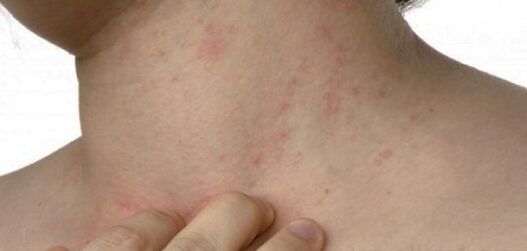
Symptoms of the early stage of the disease
To recognize the early stages of the disease, it is important to know the main symptoms.Initially, a single papul appears, which can be from several mm to 2-5 cm and has a plaque shape covered with a white scale.When they are brightened, the symptoms of the psoriatic triad characteristics are indicated:
- "Starine Spot" (scale light compartment during filming);
- "Terminal film" (shiny, thin and wet skin exposure after removing);
- Symptoms of "blood dew" (with the removal of terminal films, small blood drops that resemble dew appears on the surface of the skin).
The early stages of the disease are characterized by psoriatic foci occurrence in places, which are most often subject to trauma of any kind.As a rule, this is an elbow, a knee area in a brush or scratch.This manifestation is called "the symptoms of the hemorrhage."Initially, the papular rash spreads linearly, directly in the area of irritation and can exist for a long time without dynamic.This rash is called "guard."Itchy -Rash rash and itching.The early stages lasted for several weeks.Next, papules increase and combine into psoriatic plaque, which can accommodate important areas of the body.Psoriasis can appear anywhere.The most dangerous rash on the face is, but this early form is extremely rare.
Place of characteristic of the localization of the disease in the early stages
The most commonly observed rash:
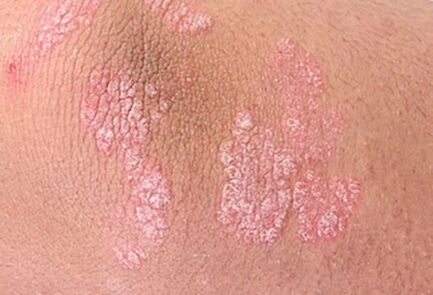
Legs.The early stages of psoriasis in the feet develop from a single small rash, most of which are located on the feet and knees, but can appear anywhere.
Elbow.On the elbow, the most common plane occurs, the symptoms characterized by a small red rash with severe peeling.At the same time, rough skin is observed on the elbows.In addition, the rash on the elbow can be symmetrical.
Nails.On the hand of the nail, the manifestation of the psoriatic resembles a fungal infection.First of all, the longitudinal strip (eyes) occurs on the edge of the nail (in the photo), and then they spread to the nail root.At the same time, the nail plate begins to thicken and be boring.With the development of the symptoms of the disease, the nail area can completely peel off.
Face.Psoriasis is very rare in the face, as this form of psoriasis is considered unusual.Hypersized papules appear in the eyelid area, nasolabial folds, near the eyes and eyebrows (in photos).In rare cases, the rash on the face appears in the red bachelor of the lips and the mucous membranes (cheeks and tongue).
The specificity of rash on the face is associated with fine, sensitive skin and many nerves.First, papules appear (small, slightly enlarged on the skin, nodules), accompanied by severe itching.Next, epithelium and plaque appear at the top of the knot.
Hand.Symptoms of psoriasis in the hands occur suddenly, appear in the form of small rash (in the photo), which many patients take as allergies.And only with the appearance of gray dry scale in the hands, palms, and on the elbows, the patient turns to dermatologists for help.It is characteristic that if there is a psoriatic rash in the palm of the hand, then the same manifestation is observed in the feet.Psoriatic manifestations in the palm of the hand are most frequently localized between the fingers, which are explained by the best environment in this place.The back of the brush is more often impressed.When psoriatic spots appear at the fingertips, losing their sensitivity is possible.
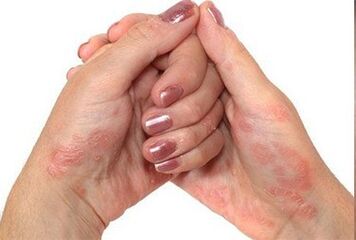
Photos of early -stage psoriasis
- Break online tests - urine, blood, general and biochemicals.
- What does bacteria mean and admission in urine analysis?
- How to understand children's analysis?
- Features -MRI analysis features
- Special Test, ECG and Ultrasound
- Norms during pregnancy and values of deviation ..
What is it?Psoriasis is an endless skin disease, so it is impossible to be infected.It not only affects the skin, but also has a negative effect on the entire organism.It is characterized by a chronic course with a period of expansion and remission.The disease is caused by their own immune cells, that is, it is an autoimmune disease.Increases from the depth of the skin to the upper layer, these cells cause inflammation, the division of excess epidermis cells, leading to excessive growth, the appearance of new small capillaries.Outside, it looks like the formation of red or red spots - psoriatic plaques.
The first signs and symptoms of psoriasis
Since psoriasis - a systemic disease that affects all body systems - patients experience general weakness, rapid fatigue.The main symptoms of the early stages of psoriasis are psoriatic rash and plaque, however, it accompanies a person with further disease progression.They arise due to uncontrolled cell division located in the upper layer of the skin.The cells involved are formed, and the skin in the area thickens, gaining red due to enhanced new capillary formation.This leads to small drops of bleeding for any, even if it is mild, injury to the plaque.The surface of the plaque is often covered with gray raids, similar to paraffin.Even the term "paraffin lake" is formed.The plaque is made up of dead epithelial cells accumulated on the surface of the plaque due to the affected rejection process.Places can reach a relatively large size, joining each other.They are hot to the touch, often accompanied by severe itching.Combs can cause infection.
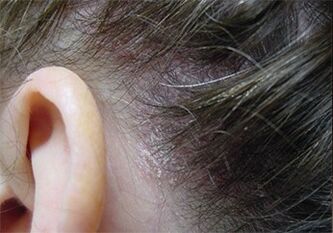
Over time, the nails began to change.Their surface becomes tired, pressure appears, pink spots can be seen under the nail plate - fluid accumulation, nails turn yellow, thicken, take the form of chicken claws.All of this is due to a violation of nail nutrition and blood circulation.Nail beds are subject to excessive keratinization, leading to rejection of nails and losses.There is usually a red border around the nails.Small joints are affected by disease and small joints - this is accompanied by pain and inflammation.In addition to plaque, with psoriasis, papules form on the skin - small (about 1 mm) that highlight the formation of rash.It is often localized on elbows and knees, preserved even during the remission.During improvement, the plaque begins to light from the middle, obtaining the shape of the ring and can be completely lost.The pigment area remains in their place.Psoriasis on the scalp have the same symptoms as on the body.In this case, the hair structure has not changed.The rash also covers the area next to the skin - behind the ear, around the neck.
Type of psoriasis
According to real symptoms, the disease is divided into two types: pustular and not labeled.There are several types of diseases in this group.
Form of pustular psoriasis:
- General;
- Annulus;
- Palmoplantah (affecting the limbs especially);
- Ladomary;
- Psoriatic impetigo.
- common (chronic plaque psoriasis);
- erythrodermic.
In addition, the following types of diseases are distinguished:
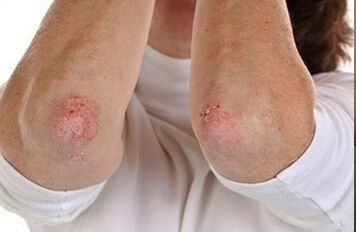
- Psoriasis napkin;
- psoriasis of skin folds and flexible surfaces;
- seborrheic -like;
- drugs.
- light (affected by less than 3 % of the body surface);
- average (affected up to 10 % of the body surface);
- Weight (more than 10 % of the affected surface).
Depending on the shape of the rash, this type of psoriasis is distinguished:
Stage of development of psoriasis, symptoms
The first plaque appears in areas with dry skin and never occurs where the skin is too wet, for example, armpits.First, the appearance of the spots can be seen on the inside of the elbow, below the knee, along the border of the hair on the head, as well as places subject to any injury or friction.Location is usually symmetrical.Take such stages during illness:
- Progressive (new spots formation, existing growth, itching, significant peeling);
- stationary (moisture or suspension of plaque growth, absence of new spots);
- Regression (decrease or lack of peeling, loss of stain and plaque with the appearance of pigmented skin areas in their place, signs of psoriasis are almost absent).
There is no special test to establish a diagnosis.Diagnosis is made based on external features.One of these signs will be the occurrence of bleeding while scraping the plaque, a bloody dew that is filled.Another specific sign of psoriasis will be the presence of pale boundaries around the young papule, not yet covered on a scale.This is a visible vascular reaction of the skin, which means the development of the disease.In the form of severe illness, blood images may change.Signs of flowing inflammation process appear.In some cases, you need to do biopsy to exclude other skin diseases and confirm the presence of psoriasis.
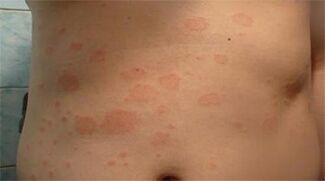
Effective psoriasis treatment
In the treatment of psoriasis, both local medicines and physiotherapy treatment, and spa are used.In the early early journey of the disease, medicines in the form of ointment are used.First, ointment and composition creams are easy to use, then go to hormone -containing ointments.Cream from psoriasis should be used only for plaques and spots.With average and severe disease, internal products that affect the whole body, but give the best results, are used.This group includes vitamin A, immunosuppressants, cytostatics.Physiotherapists bring significant relief to patients with psoriasis, can prevent the development of the disease and sometimes replace the use of several drugs.UV irradiation (phototherapy), laser, ultrasound and magnetotherapy, hyperthermia, electrons, electrophoresis, electrophoresis are used.Psoriasis is able to obtain resistance to treatment used over time, so it is recommended to change the method (rotation of treatment) over time.Diseases with manifestations of the head are treated in the same way as in other parts of the body using ointment and physiotherapy.
Diet with psoriasis
Nutrition should help adjust metabolism and prevent the appearance or suppression of skin symptoms.Since almost all patients have lipid metabolism violations, priority should be given to low products.A special fire diet, Pegano gets a wide fame.When organizing a diet, you should try to comply with some simple rules:
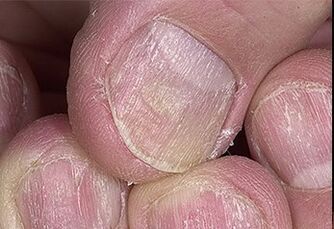
- Refusal of alcoholic beverages;
- Food up to 6 times a day, little by little;
- Excluding fried foods, smoking from diet;
- Reduce salt content in foods;
- If possible, do not eat foods with dye content, stabilizers and other nutritional supplements;
- Excludes citrus fruits;
- Increase the vegetable parts and cereals in the diet;
- Mandatory use of vegetable oil.
Compliance with these simple rules will help prevent psoriasis problems and freely compile a therapeutic diet.
Pictures of early stage symptoms of psoriasis
Among the first symptoms of early stage psoriasis, the appearance of small papular elements of the epidermis are distinguished.In the early stages of psoriasis, in the photo, the papules look small, with pink heads, pink hemisphere formations with smooth and shiny surfaces.A few days later, they were covered with a white, light silver scale.Such manifestations are called "points" of psoriasis.Early psoriasis is characterized by the appearance of new small elements of the new psoriasis or the growth of the first psoriasis signs.
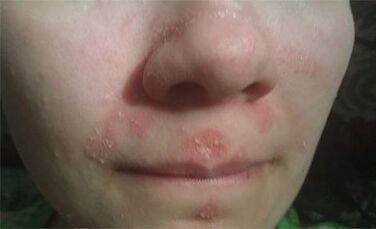
Nearly the presence of the phenomenon of the kerbner is mounted according to the linear psoriatic elements that appear after any injuries, for example, after brushing with severe itching, and more.Finally, with a progressive level, the patient feels itchy from various intensity, which is usually not a feature of other levels of the process.The progressive stage period is individual.Usually the progressive level lasts from 2 weeks to several months.During this time, it is best to use non -ointment of psoriasis as a further prevention and treatment.
The regressive level of psoriasis is the final stage of the psoriatic cycle.It is accompanied by a decrease in peeling, gradually leveling the elements in the middle and its subsequent resolution.In this case, a multi -figure picture (arc, trapezoid, ring) can be obtained.In this case, psoriasis is called "geography."There may be other ways to complete the elements where it starts with the edge of the element.No scars or atrophy are formed.Hyperpigmentations or areas that do not have pigments (pseudo -proderm psoriatic) may appear at the site of the allowed elements.This change is temporary.It should be noted that such divisions are largely conditional.In some cases, it is difficult to immediately establish the process.In this case, the diagnosis of psoriasis is established after observing the patient.























